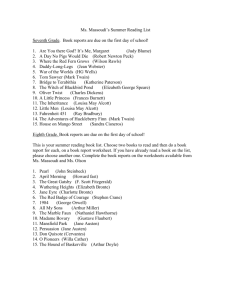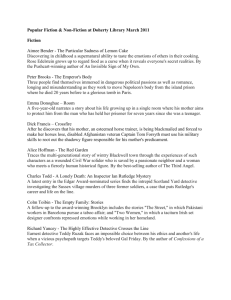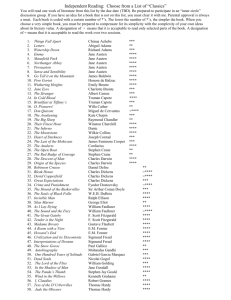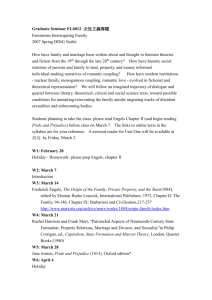The Omnipotent Magician: Lancelot 'Capability' Brown, 1716–1783
advertisement
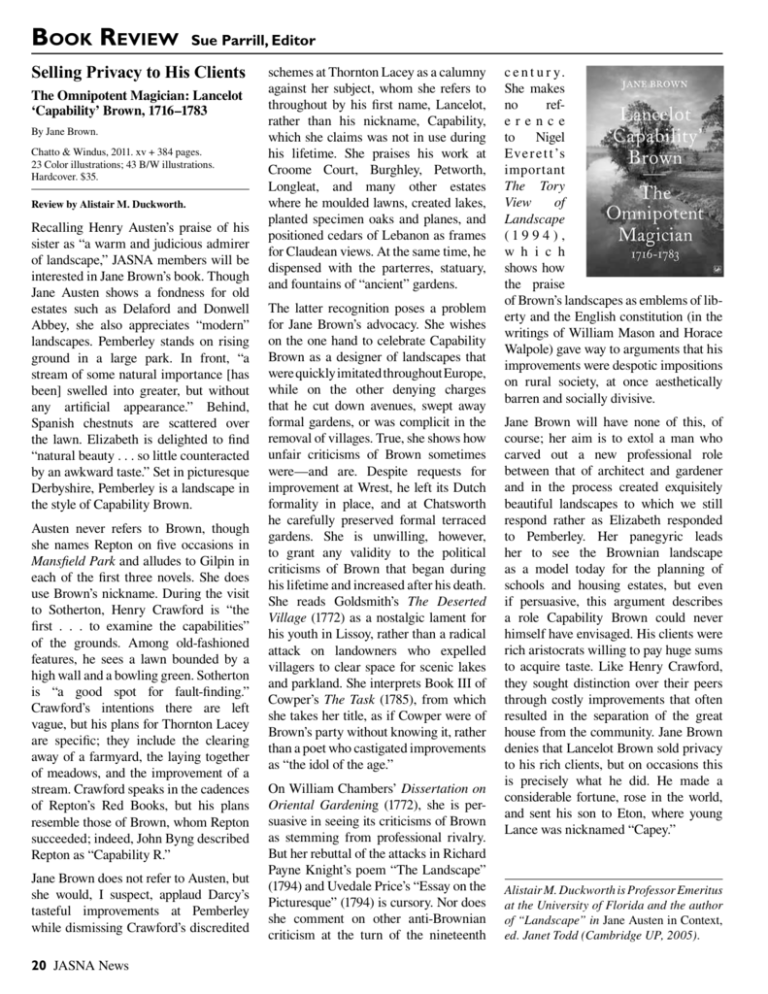
Book Review Sue Parrill, Editor Selling Privacy to His Clients The Omnipotent Magician: Lancelot ‘Capability’ Brown, 1716–1783 By Jane Brown. Chatto & Windus, 2011. xv + 384 pages. 23 Color illustrations; 43 B/W illustrations. Hardcover. $35. Review by Alistair M. Duckworth. Recalling Henry Austen’s praise of his sister as “a warm and judicious admirer of landscape,” JASNA members will be interested in Jane Brown’s book. Though Jane Austen shows a fondness for old estates such as Delaford and Donwell Abbey, she also appreciates “modern” landscapes. Pemberley stands on rising ground in a large park. In front, “a stream of some natural importance [has been] swelled into greater, but without any artificial appearance.” Behind, Spanish chestnuts are scattered over the lawn. Elizabeth is delighted to find “natural beauty . . . so little counteracted by an awkward taste.” Set in picturesque Derbyshire, Pemberley is a landscape in the style of Capability Brown. Austen never refers to Brown, though she names Repton on five occasions in Mansfield Park and alludes to Gilpin in each of the first three novels. She does use Brown’s nickname. During the visit to Sotherton, Henry Crawford is “the first . . . to examine the capabilities” of the grounds. Among old-fashioned features, he sees a lawn bounded by a high wall and a bowling green. Sotherton is “a good spot for fault-finding.” Crawford’s intentions there are left vague, but his plans for Thornton Lacey are specific; they include the clearing away of a farmyard, the laying together of meadows, and the improvement of a stream. Crawford speaks in the cadences of Repton’s Red Books, but his plans resemble those of Brown, whom Repton succeeded; indeed, John Byng described Repton as “Capability R.” Jane Brown does not refer to Austen, but she would, I suspect, applaud Darcy’s tasteful improvements at Pemberley while dismissing Crawford’s discredited 20 JASNA News schemes at Thornton Lacey as a calumny against her subject, whom she refers to throughout by his first name, Lancelot, rather than his nickname, Capability, which she claims was not in use during his lifetime. She praises his work at Croome Court, Burghley, Petworth, Longleat, and many other estates where he moulded lawns, created lakes, planted specimen oaks and planes, and positioned cedars of Lebanon as frames for Claudean views. At the same time, he dispensed with the parterres, statuary, and fountains of “ancient” gardens. The latter recognition poses a problem for Jane Brown’s advocacy. She wishes on the one hand to celebrate Capability Brown as a designer of landscapes that were quickly imitated throughout Europe, while on the other denying charges that he cut down avenues, swept away formal gardens, or was complicit in the removal of villages. True, she shows how unfair criticisms of Brown sometimes were—and are. Despite requests for improvement at Wrest, he left its Dutch formality in place, and at Chatsworth he carefully preserved formal terraced gardens. She is unwilling, however, to grant any validity to the political criticisms of Brown that began during his lifetime and increased after his death. She reads Goldsmith’s The Deserted Village (1772) as a nostalgic lament for his youth in Lissoy, rather than a radical attack on landowners who expelled villagers to clear space for scenic lakes and parkland. She interprets Book III of Cowper’s The Task (1785), from which she takes her title, as if Cowper were of Brown’s party without knowing it, rather than a poet who castigated improvements as “the idol of the age.” On William Chambers’ Dissertation on Oriental Gardening (1772), she is persuasive in seeing its criticisms of Brown as stemming from professional rivalry. But her rebuttal of the attacks in Richard Payne Knight’s poem “The Landscape” (1794) and Uvedale Price’s “Essay on the Picturesque” (1794) is cursory. Nor does she comment on other anti-Brownian criticism at the turn of the nineteenth c e n t u r y. She makes no reference to Nigel Eve r e t t ’s important The Tory View of Landscape (1994), w h i c h shows how the praise of Brown’s landscapes as emblems of liberty and the English constitution (in the writings of William Mason and Horace Walpole) gave way to arguments that his improvements were despotic impositions on rural society, at once aesthetically barren and socially divisive. Jane Brown will have none of this, of course; her aim is to extol a man who carved out a new professional role between that of architect and gardener and in the process created exquisitely beautiful landscapes to which we still respond rather as Elizabeth responded to Pemberley. Her panegyric leads her to see the Brownian landscape as a model today for the planning of schools and housing estates, but even if persuasive, this argument describes a role Capability Brown could never himself have envisaged. His clients were rich aristocrats willing to pay huge sums to acquire taste. Like Henry Crawford, they sought distinction over their peers through costly improvements that often resulted in the separation of the great house from the community. Jane Brown denies that Lancelot Brown sold privacy to his rich clients, but on occasions this is precisely what he did. He made a considerable fortune, rose in the world, and sent his son to Eton, where young Lance was nicknamed “Capey.” Alistair M. Duckworth is Professor Emeritus at the University of Florida and the author of “Landscape” in Jane Austen in Context, ed. Janet Todd (Cambridge UP, 2005).

